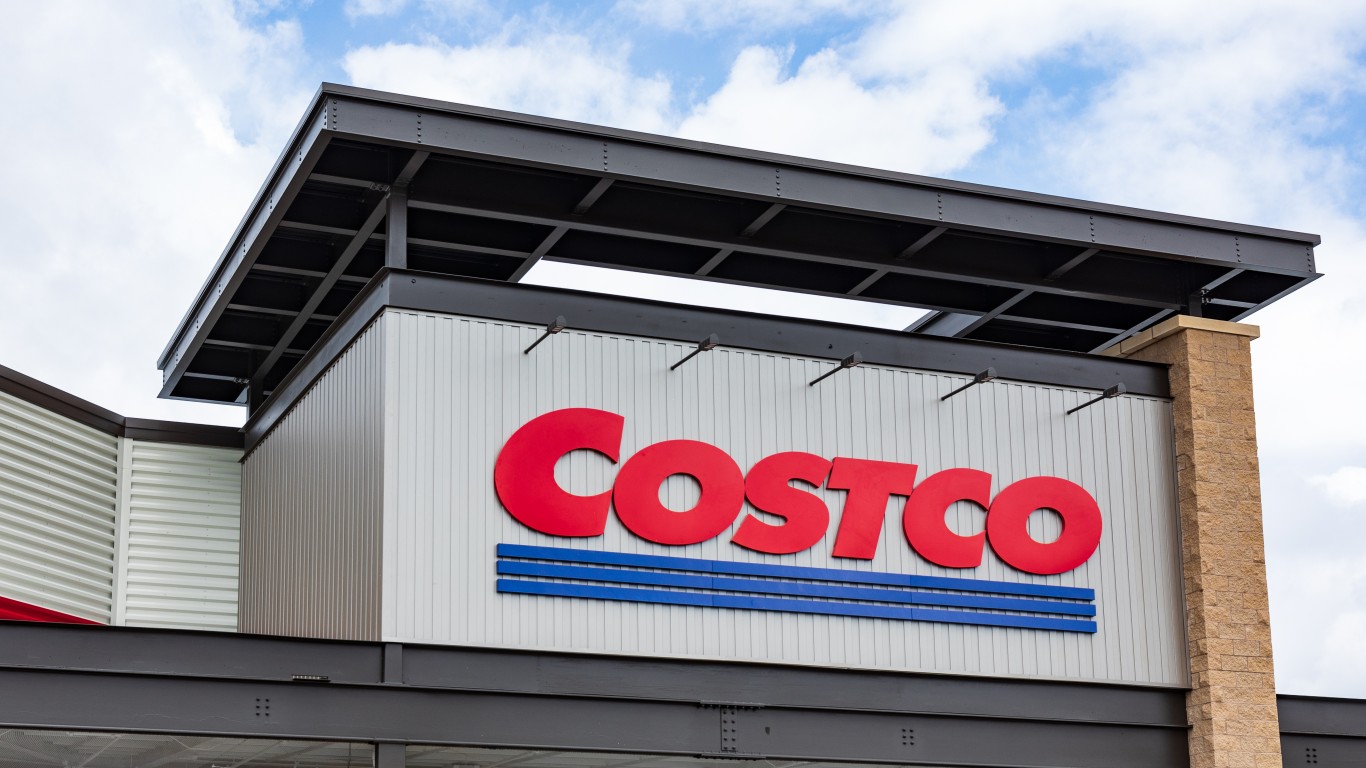Companies and Brands
Costco Membership Fees Are What Makes It Profitable

Published:

24/7 Wall St. Insights
When Costco Wholesale Corp. (NASDAQ: COST) raised its membership fees in September, it was considered an important event for the company. The price of the base Goldstar membership rose from $60 to $65, and the higher-level Executive membership rose from $120 to $130. The decision affected 52 million members and was the first increase in seven years. The total effect of the decisions is huge on Costco’s bottom line.
Costco, unlike most public companies, offers multiweek financial updates. It recently released its most frequent nine-week numbers. Revenue for the period ending October 30 was up an impressive 8% to $44.65 billion.
Over a longer period, annual revenue was up 5% to $254.5 billion in the year that ended September 31, 2024, and net income rose 17% to $7.37 billion.
Of the $254.5 billion, $4.8 billion was from Membership and $249.6 billion from Net Sales, equivalent to revenue.
On a simple dollar basis, Membership is only 2% of total annual revenue. However, that calculation is misleading. It is tempting to view the membership revenue this way.
However, one of the primary reasons membership dollars are essential is that, presumably, they cost Costco zero, so the membership margin against net revenue is 66% of the retailer’s bottom line.
Costco’s membership program is also viewed as a loyalty builder. People cannot get Costco’s low-priced merchandise without one. That is hard to measure. The contribution to the bottom line is not.
Costco Just Paid Investors: Here’s How Much They Received
Thank you for reading! Have some feedback for us?
Contact the 24/7 Wall St. editorial team.